Unusual Ways to Save Electricity at Home
In today's world, where every penny counts, finding ways to save electricity at home is not just a smart financial move but also a step towards a more sustainable lifestyle. You might think that reducing your energy consumption requires drastic changes or expensive upgrades, but that's not the case! There are plenty of creative and unconventional methods that can help you cut down on your electricity bill without sacrificing comfort. So, let’s dive into some surprising strategies that can make a real difference in your home energy usage.
One of the simplest yet most effective ways to save electricity is to harness the power of natural light. By strategically placing mirrors around your home, you can reflect sunlight into darker areas, brightening up your space without flipping a switch. Moreover, consider using lighter colors in your decor; they can help to bounce light around the room, making it feel more open and inviting. Not only will this reduce your reliance on artificial lighting during the day, but it will also create a warm and pleasant atmosphere in your home.
Have you ever heard of phantom loads? These are the energy-sucking vampires that lurk in your home, consuming power even when devices are turned off. Investing in smart power strips can help eliminate these hidden energy drains. These nifty devices automatically cut power to electronics that are not in use, which can lead to substantial energy savings over time. Imagine the relief of knowing that your devices aren’t secretly racking up your electricity bill while you’re away!
Upgrading to energy-efficient appliances is another smart move that can have a big impact on your electricity consumption. While the initial investment might seem daunting, these appliances are designed to use significantly less energy compared to their older counterparts. Not only will you see a reduction in your electricity bill, but you’ll also be contributing to a lower carbon footprint, making your home more environmentally friendly. It’s a win-win situation!
Keeping your home cool during the scorching summer months can be a challenge, but implementing heat reduction techniques can make a significant difference. Consider using reflective window films or thermal curtains that block out the sun’s heat while still allowing natural light to filter in. This can help reduce your reliance on air conditioning, leading to lower energy bills. Plus, you’ll enjoy a more comfortable living space!
Did you know that you can enhance your home's insulation through simple DIY projects? This is a fantastic way to prevent heat loss in the winter and keep your space cooler in the summer. Adding weather stripping to doors and windows, sealing gaps, or even installing insulation in your attic can drastically improve your home's energy efficiency. The best part? These projects can often be done with minimal cost and effort, making them accessible for everyone!
Integrating smart home technology into your living space allows for more efficient energy management. Devices like programmable thermostats and smart lighting systems enable you to control your home’s energy usage with ease. For instance, you can set your thermostat to lower the temperature when you’re not home or program your lights to turn off automatically at night. This way, you’re only using power when you truly need it, which can lead to significant savings over time.
When it comes to preparing meals, exploring alternative cooking methods can save you a surprising amount of energy. For example, using a slow cooker or pressure cooker can be much more energy-efficient compared to traditional ovens. Not only do these methods consume less electricity, but they can also enhance the flavors of your meals, providing delicious options that are both easy and economical!
Don’t forget about your outdoor space! Utilizing outdoor energy solutions, like solar-powered garden lights, can significantly reduce your indoor electricity consumption. Additionally, consider outdoor cooking options, such as grills or fire pits, for summer gatherings. Not only do these solutions enhance your outdoor living space, but they also help you save on your indoor electricity usage.
Sometimes, the simplest changes in behavior can lead to noticeable savings on your electricity bill. Simple actions, such as turning off lights when leaving a room or unplugging chargers when they’re not in use, can collectively make a significant impact. Think of it like this: every time you turn off a light, you’re not just saving energy; you’re also contributing to a healthier planet.
- What are phantom loads? Phantom loads refer to the energy consumed by devices when they are turned off but still plugged in.
- How can I improve my home’s insulation? You can enhance insulation by sealing gaps around windows and doors, adding weather stripping, or installing insulation in your attic.
- Are energy-efficient appliances worth the investment? Yes, while they may have a higher upfront cost, they save money on electricity bills and reduce your carbon footprint over time.
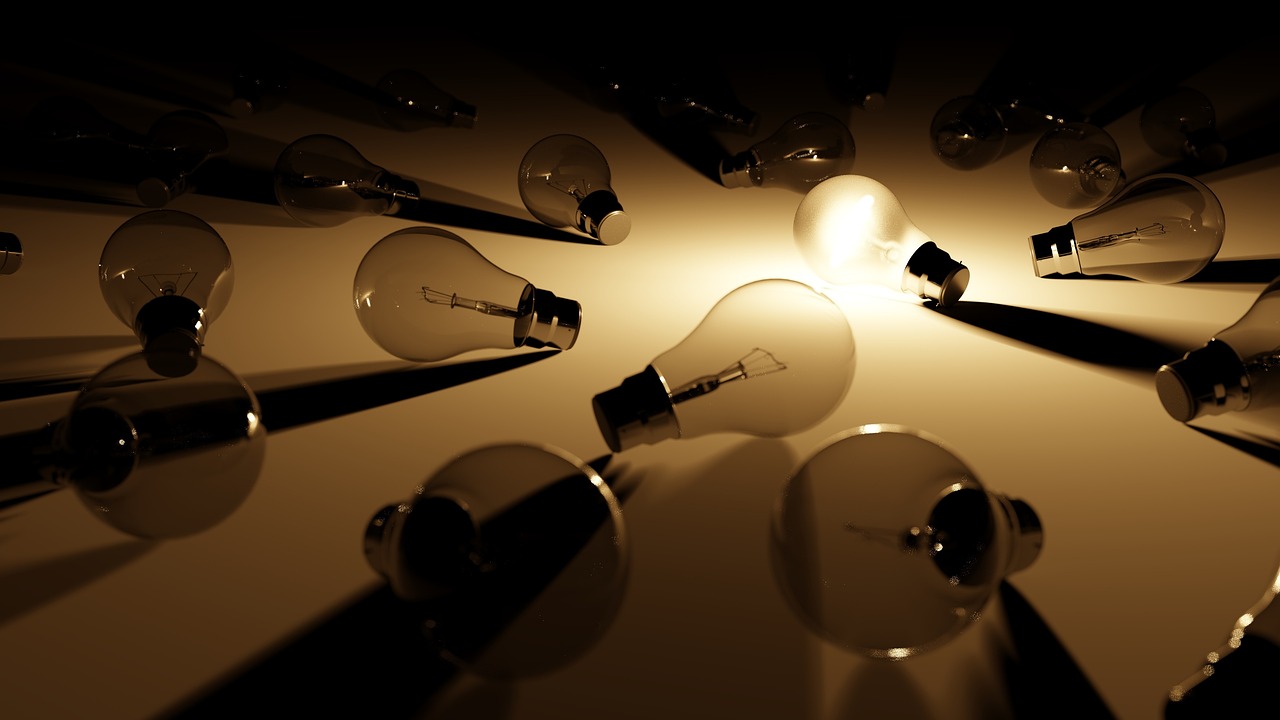
Utilizing Natural Light
This article explores creative and unconventional methods to reduce electricity consumption in your home, helping you save money while promoting a more sustainable lifestyle.
One of the most effective yet often overlooked ways to save electricity is by maximizing the use of natural light. Imagine waking up in the morning, the sun streaming through your windows, illuminating your space without the need for artificial lighting. Not only does this create a warm and inviting atmosphere, but it also significantly cuts down on your electricity usage during the day. By strategically placing mirrors in your home, you can reflect sunlight into darker areas, making them feel brighter and more spacious. Consider positioning a large mirror across from a window; it can work wonders in bouncing light around the room.
Additionally, using lighter colors in your decor can enhance the effect of natural light. Light walls and furnishings reflect sunlight, amplifying its brightness and reducing the need for overhead lights. If your walls are painted in dark hues, you might be missing out on the full potential of daylight. A simple coat of paint can transform your space into a more energy-efficient haven.
Here are a few practical tips to help you harness natural light:
- Choose the Right Window Treatments: Opt for sheer curtains or blinds that can be easily opened to let in maximum light.
- Keep Windows Clean: A clean window allows more sunlight to enter your home. Make it a habit to clean your windows regularly.
- Consider Skylights: If you're up for a renovation, installing skylights can bring in a flood of natural light, especially in areas where windows are limited.
By embracing these techniques, you not only create a brighter environment but also contribute to a more sustainable lifestyle. Imagine the savings on your electricity bill when you rely less on artificial lighting! It’s a win-win situation: you enjoy a beautifully lit home while being kinder to the planet.
Investing in smart power strips can help eliminate phantom loads by automatically cutting power to devices that are not in use, leading to substantial energy savings over time.
Upgrading to energy-efficient appliances not only reduces your electricity bill but also contributes to a lower carbon footprint, making your home more environmentally friendly.
Implementing heat reduction techniques, such as using reflective window films or thermal curtains, can keep your home cooler in the summer, decreasing reliance on air conditioning.
Enhancing your home's insulation through DIY projects can prevent heat loss in winter and keep your space cooler in summer, ultimately leading to reduced energy usage.
Integrating smart home technology, like programmable thermostats and smart lighting, allows for more efficient energy management, ensuring that you're only using power when needed.
Exploring alternative cooking methods, such as slow cookers or pressure cookers, can save significant energy compared to traditional ovens, while also providing delicious meal options.
Utilizing outdoor energy solutions, like solar-powered garden lights and outdoor cooking options, can reduce your indoor electricity consumption while enhancing your outdoor living space.
Simple behavioral changes, such as turning off lights when leaving a room or unplugging chargers, can collectively lead to noticeable savings on your electricity bill over time.
Q1: How can I maximize natural light in my home?
A1: You can maximize natural light by using mirrors to reflect light, choosing lighter colors for your walls and decor, and keeping windows clean and unobstructed.
Q2: Do smart power strips really make a difference?
A2: Yes! Smart power strips can significantly reduce phantom energy loads by cutting off power to devices that are not in use, leading to lower electricity bills.
Q3: What are some energy-efficient appliances I should consider?
A3: Look for appliances with the ENERGY STAR label, which indicates they meet energy efficiency guidelines set by the U.S. Environmental Protection Agency.
Q4: Can behavioral changes really impact my electricity bill?
A4: Absolutely! Small changes, such as turning off lights and unplugging devices when not in use, can accumulate over time and lead to significant savings.

Smart Power Strips
This article explores creative and unconventional methods to reduce electricity consumption in your home, helping you save money while promoting a more sustainable lifestyle.
Maximize the use of natural light by strategically placing mirrors and using lighter colors in your decor, which can significantly reduce the need for artificial lighting during the day.
Have you ever wondered how much energy your electronics are consuming even when they're turned off? It's a sneaky little phenomenon known as "phantom load," and it can seriously inflate your electricity bill without you even realizing it. This is where come to the rescue! These nifty devices can automatically cut off power to your electronics when they’re not in use, effectively eliminating that pesky phantom load.
Think of smart power strips as your home's energy watchdog. They monitor your devices and can be set to turn off power when your devices go into standby mode. This means that whether it's your TV, computer, or gaming console, you can rest easy knowing they're not draining energy while you're away. For example, you can plug your entertainment system into a smart power strip that turns off the power when the TV is switched off. It's like having a personal assistant that ensures your devices are only using energy when absolutely necessary!
Moreover, many smart power strips come equipped with USB ports, allowing you to charge your gadgets without needing to keep a traditional charger plugged in. This not only saves energy but also keeps your space tidy, eliminating the clutter of multiple chargers. Some models even feature surge protection, safeguarding your devices against power spikes. It's a win-win situation!
| Feature | Benefit |
|---|---|
| Automatic shut-off | Reduces phantom load, saving energy and money. |
| USB charging ports | Convenient charging without using additional outlets. |
| Surge protection | Protects devices from electrical surges. |
In summary, investing in smart power strips is a simple yet effective way to cut down on electricity usage in your home. They not only help you save money but also contribute to a more sustainable lifestyle. So, why not give your energy bill a break and let these smart devices do the heavy lifting? You'll be amazed at how much you can save over time!
Upgrading to energy-efficient appliances not only reduces your electricity bill but also contributes to a lower carbon footprint, making your home more environmentally friendly.
Implementing heat reduction techniques, such as using reflective window films or thermal curtains, can keep your home cooler in the summer, decreasing reliance on air conditioning.
Enhancing your home's insulation through DIY projects can prevent heat loss in winter and keep your space cooler in summer, ultimately leading to reduced energy usage.
Integrating smart home technology, like programmable thermostats and smart lighting, allows for more efficient energy management, ensuring that you're only using power when needed.
Exploring alternative cooking methods, such as slow cookers or pressure cookers, can save significant energy compared to traditional ovens, while also providing delicious meal options.
Utilizing outdoor energy solutions, like solar-powered garden lights and outdoor cooking options, can reduce your indoor electricity consumption while enhancing your outdoor living space.
Simple behavioral changes, such as turning off lights when leaving a room or unplugging chargers, can collectively lead to noticeable savings on your electricity bill over time.
Q: What is a smart power strip?
A: A smart power strip is a device that can automatically cut off power to electronics that are not in use, helping to eliminate phantom load.
Q: How much can I save by using smart power strips?
A: Savings can vary, but using smart power strips can help reduce your electricity bill by eliminating unnecessary energy consumption, potentially saving you hundreds of dollars over time.
Q: Can I use smart power strips with any device?
A: Most smart power strips can be used with a variety of devices, but it’s best to check the specifications to ensure compatibility, especially for high-wattage appliances.
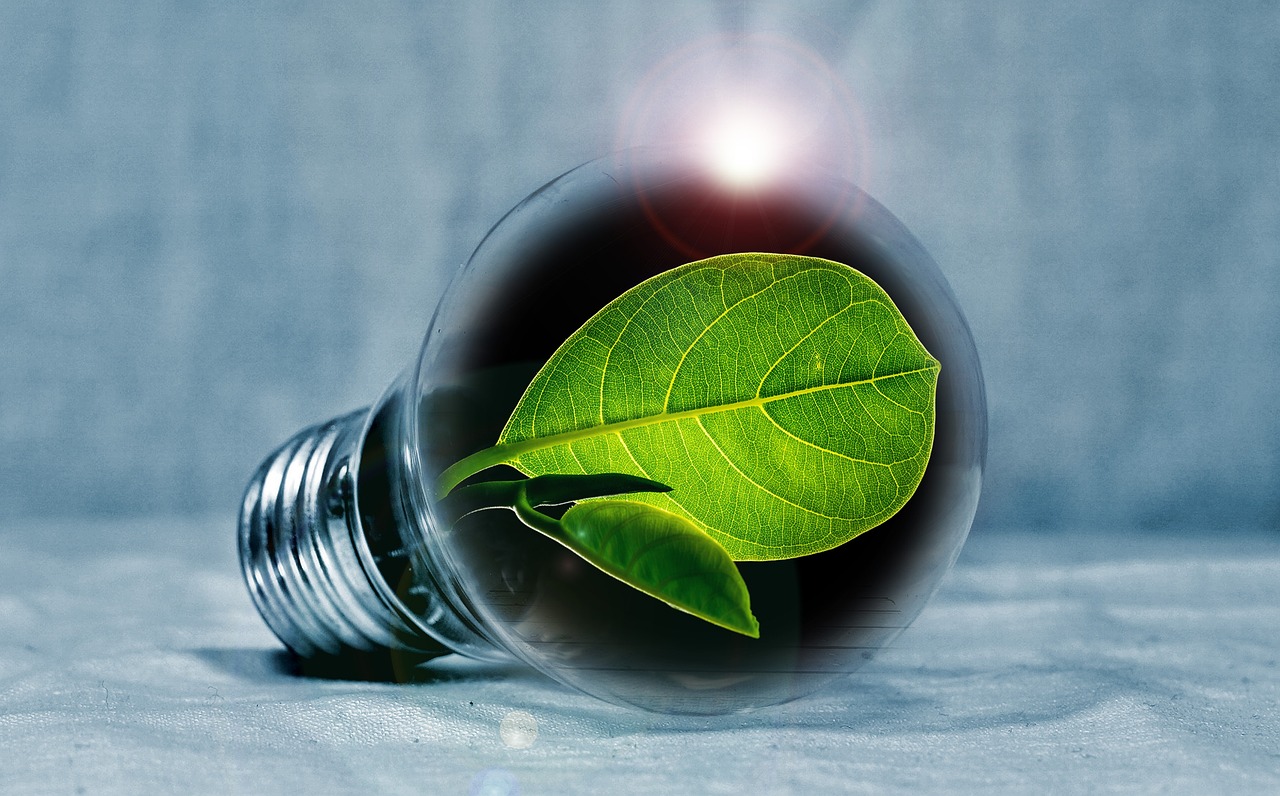
Energy-Efficient Appliances
When it comes to reducing your electricity bill and lowering your carbon footprint, are a game changer. These appliances are designed to use less energy while delivering the same performance as their traditional counterparts. Imagine your refrigerator sipping energy like a fine wine instead of guzzling it like a thirsty traveler in the desert. By upgrading to energy-efficient models, you can enjoy significant savings on your monthly utility bills while also contributing to a more sustainable environment.
So, what exactly makes an appliance energy-efficient? The key lies in its Energy Star rating. Appliances that carry this label meet strict energy efficiency guidelines set by the U.S. Environmental Protection Agency (EPA). For instance, a standard refrigerator uses about 400 kWh per year, while an Energy Star-rated model can use as little as 300 kWh. Over time, these savings add up, allowing you to redirect those funds toward something more enjoyable—like that vacation you've been dreaming about!
Here’s a quick comparison of some common household appliances and their energy usage:
| Appliance | Traditional Energy Use (kWh/year) | Energy-Efficient Energy Use (kWh/year) | Potential Savings (kWh/year) |
|---|---|---|---|
| Refrigerator | 400 | 300 | 100 |
| Washing Machine | 500 | 350 | 150 |
| Dishwasher | 300 | 200 | 100 |
| Dryer | 800 | 600 | 200 |
As you can see, the potential savings from switching to energy-efficient appliances can be quite substantial. But it’s not just about the numbers; it’s also about the peace of mind that comes with knowing you’re doing your part for the planet. Many people often overlook the environmental impact of their household choices, but every little bit counts. Think of it as a ripple effect; when you make a small change, it can inspire others to do the same, creating a wave of positive change.
Moreover, many energy-efficient appliances come with advanced features that enhance convenience and functionality. For example, modern washing machines often have settings that allow you to wash clothes with cold water, further reducing energy consumption. Similarly, energy-efficient dishwashers are designed to use less water and energy while still delivering sparkling clean dishes. It’s like having a personal assistant that not only saves you money but also makes your life easier!
In conclusion, investing in energy-efficient appliances is a smart choice for anyone looking to save money and promote sustainability. By making this switch, you are not only reducing your energy consumption but also embracing a lifestyle that prioritizes the health of our planet. So, next time you’re in the market for a new appliance, remember to look for that Energy Star label—it’s a small step that can lead to a big impact!
- What are Energy Star appliances? Energy Star appliances meet energy efficiency guidelines set by the EPA, ensuring they use less energy than standard models.
- How much can I save by using energy-efficient appliances? Savings can vary, but many households see reductions of 20-50% on their energy bills, depending on the appliances they replace.
- Are energy-efficient appliances more expensive? While the upfront cost may be higher, the long-term savings on energy bills often outweigh the initial investment.
- How can I find energy-efficient appliances? Look for the Energy Star label when shopping, and check online reviews and energy guides for additional information.

Heat Reduction Techniques
In the sweltering heat of summer, keeping your home cool can feel like an uphill battle, especially when the air conditioning is running non-stop. But what if I told you there are creative heat reduction techniques that can help you beat the heat without breaking the bank? By implementing a few strategic changes, you can create a cooler living space while also slashing your electricity bills. Let's dive into some practical methods that can transform your home into a refreshing oasis.
One of the most effective ways to reduce heat is by installing reflective window films. These films act like sunscreen for your windows, reflecting the sun's rays away from your home. Imagine sitting in a room where the sunlight streams in, but instead of feeling like you're in a sauna, you enjoy a comfortable, temperate environment. Not only do these films help to keep your home cooler, but they also protect your furniture and flooring from fading due to sun exposure.
Another fantastic solution is to invest in thermal curtains. These curtains are designed with insulating materials that help block heat during the day and retain warmth during the night. Think of them as cozy blankets for your windows. By drawing them during the hottest parts of the day, you can significantly lower the temperature inside your home. Plus, they come in various styles and colors, so you can keep your decor looking chic while enjoying the benefits.
Additionally, strategic landscaping can play a crucial role in heat reduction. Planting trees or tall shrubs around your home can provide natural shade, reducing the amount of direct sunlight that hits your walls and windows. This not only keeps your home cooler but also enhances your property’s curb appeal. Consider creating a garden that not only looks good but also serves a functional purpose in cooling your home.
Now, let’s talk about ventilation. Proper airflow can make a world of difference in maintaining a comfortable temperature. Ensure that your home is well-ventilated by using ceiling fans or box fans to circulate air. You can even create a cross-breeze by opening windows on opposite sides of your home during cooler evening hours. It's like giving your house a refreshing breath of fresh air!
Lastly, consider the color of your roof and exterior walls. Dark colors absorb more heat, whereas lighter shades reflect it. If you're planning to repaint or replace your roof, opting for lighter colors can contribute to a cooler home. You might be surprised at how much of a difference this simple change can make. It’s like wearing a white shirt on a hot day versus a black one; the choice can be quite impactful!
In conclusion, implementing these heat reduction techniques not only makes your living space more comfortable but also helps you save on energy costs. By combining reflective window films, thermal curtains, strategic landscaping, effective ventilation, and thoughtful color choices, you can create an environment that stays cool without relying heavily on air conditioning. So why not give these methods a try? Your wallet—and your comfort—will thank you!
Q: How much can I save on my electricity bill by using heat reduction techniques?
A: The savings can vary based on your current energy usage and the methods you implement, but many homeowners report reductions of 10-30% in their cooling costs after adopting these techniques.
Q: Do reflective window films affect the visibility from inside my home?
A: Most reflective window films are designed to allow visibility from the inside while reducing glare and heat from the outside. However, the level of reflectivity can vary, so it's best to choose a film that meets your needs.
Q: Are thermal curtains expensive?
A: While prices can vary, there are thermal curtains available at various price points. Investing in a good set can provide long-term savings on your energy bills, making them a worthwhile purchase.
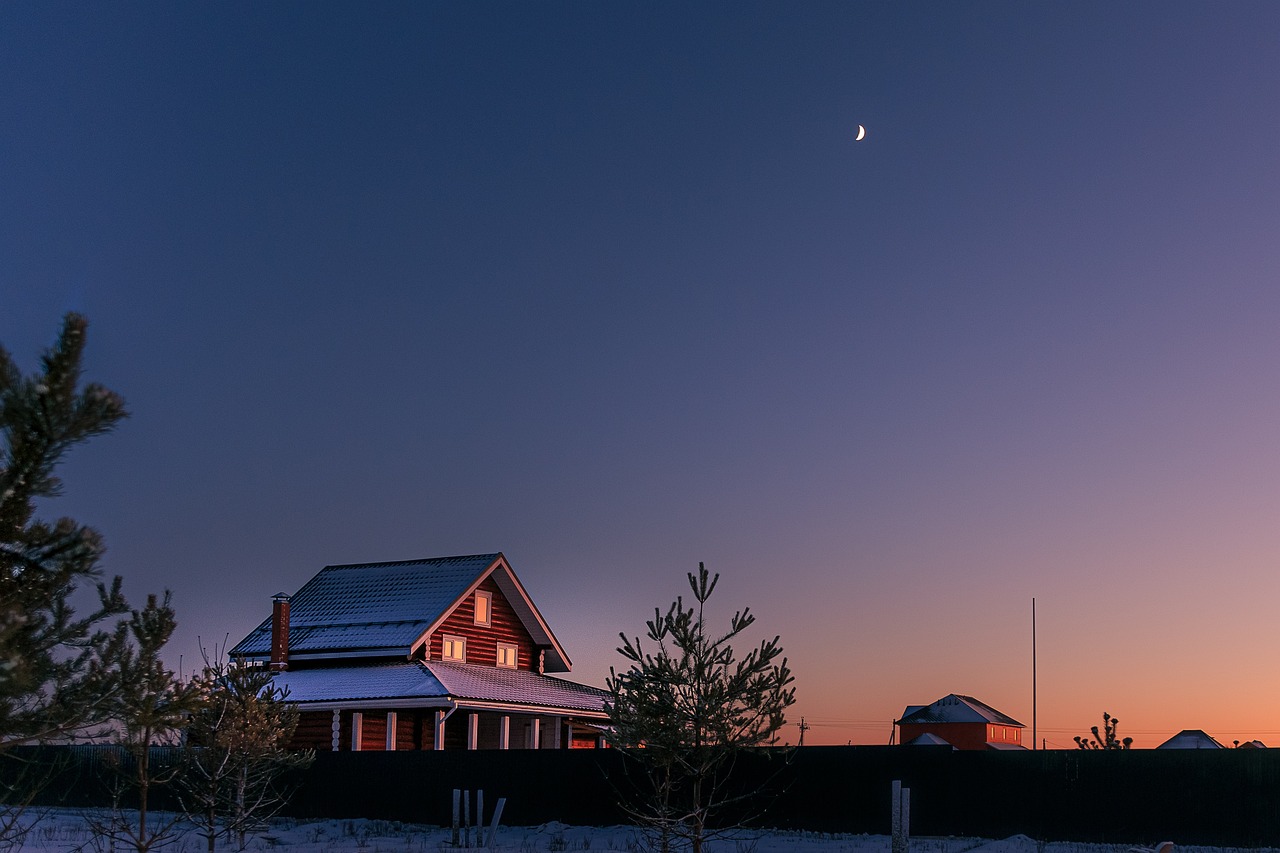
DIY Insulation Improvements
When it comes to keeping your home cozy and energy-efficient, insulation plays a pivotal role. Many homeowners underestimate the impact of proper insulation, thinking it's just a job for the professionals. However, with a bit of creativity and effort, you can tackle some that will not only keep your home comfortable but also save you a chunk of change on your electricity bills!
One of the most effective ways to enhance your home's insulation is by focusing on the attic. Did you know that a significant amount of heat can escape through the roof? Adding fiberglass or foam board insulation in your attic can create a barrier that keeps the warmth in during winter and the heat out during summer. Not only is this a relatively easy DIY project, but it can also pay off in energy savings over time. Just imagine how much more comfortable your home will be!
Another area to consider is your walls. If your home has cavities between the walls, you might want to insulate them. You can use spray foam insulation or blow-in insulation, which can be a fun (and slightly messy) project to undertake. While you’re at it, don’t forget about those drafty windows and doors. Sealing gaps with weather stripping or caulk can make a world of difference. It’s like giving your home a warm hug!
If you want to get a bit more advanced, consider adding reflective insulation in your basement or crawl space. This type of insulation reflects radiant heat away from living spaces, which can be particularly beneficial in warmer climates. You can install it easily by stapling it to the underside of your roof rafters or attaching it to walls. The best part? It’s a project that can be completed in a weekend!
To give you a clearer picture of how these DIY insulation improvements can stack up, here’s a simple
| Insulation Type | Estimated Cost | Annual Energy Savings |
|---|---|---|
| Attic Insulation | $500 - $1,500 | $200 - $600 |
| Wall Insulation | $1,000 - $3,000 | $150 - $400 |
| Window Sealing | $100 - $300 | $50 - $200 |
| Reflective Insulation | $200 - $800 | $100 - $300 |
As you can see, the upfront investment in DIY insulation improvements can lead to substantial long-term savings. It’s not just about saving money; it’s about creating a more sustainable living environment for you and your family. Plus, there’s something incredibly satisfying about rolling up your sleeves and making your home more energy-efficient with your own hands.
So, are you ready to take on the challenge of improving your home’s insulation? Remember, every little bit helps, and you might just surprise yourself with how much you can achieve. Not only will you enjoy a more comfortable home, but you’ll also be contributing to a greener planet.
- What is the best type of insulation for DIY projects? Fiberglass batts and spray foam are popular choices due to their ease of installation and effectiveness.
- How can I tell if my home needs better insulation? Look for drafts, fluctuating temperatures in different rooms, and high energy bills as signs that your insulation may need improvement.
- Is DIY insulation safe? Yes, as long as you follow safety guidelines, use protective gear, and ensure proper ventilation during installation.

Smart Home Technology
This article explores creative and unconventional methods to reduce electricity consumption in your home, helping you save money while promoting a more sustainable lifestyle.
Maximize the use of natural light by strategically placing mirrors and using lighter colors in your decor, which can significantly reduce the need for artificial lighting during the day.
Investing in smart power strips can help eliminate phantom loads by automatically cutting power to devices that are not in use, leading to substantial energy savings over time.
Upgrading to energy-efficient appliances not only reduces your electricity bill but also contributes to a lower carbon footprint, making your home more environmentally friendly.
Implementing heat reduction techniques, such as using reflective window films or thermal curtains, can keep your home cooler in the summer, decreasing reliance on air conditioning.
Enhancing your home's insulation through DIY projects can prevent heat loss in winter and keep your space cooler in summer, ultimately leading to reduced energy usage.
Integrating into your living space is like giving your home a brain! Imagine being able to control your lights, thermostat, and even your appliances right from your smartphone. This not only makes life easier but also helps you save on energy costs. For example, a programmable thermostat can learn your schedule and adjust the temperature accordingly, ensuring you're not heating or cooling an empty house.
Moreover, smart lighting systems allow you to set schedules for your lights, so they only turn on when you need them. You can even control them remotely, which means if you forget to turn off the lights before leaving home, you can do it from anywhere! Just think of the energy savings over time. Here’s a quick breakdown of how smart home technology can impact your electricity usage:
| Smart Technology | Energy Savings |
|---|---|
| Smart Thermostats | Up to 10-15% savings on heating and cooling costs |
| Smart Lights | Up to 75% less energy use compared to traditional bulbs |
| Smart Plugs | Elimination of phantom loads, saving up to $100/year |
In addition to these devices, you can also explore smart home hubs that connect all your gadgets, allowing for seamless communication and control. This not only enhances your convenience but also helps you monitor your energy usage in real-time. Imagine receiving alerts when your energy consumption spikes, prompting you to take action. It's like having a personal energy coach right in your pocket!
So, if you're looking to transform your home into an energy-saving powerhouse, embracing smart home technology is an exciting and effective way to do it. Not only will you enjoy the comforts of modern living, but you'll also contribute to a more sustainable future.
Exploring alternative cooking methods, such as slow cookers or pressure cookers, can save significant energy compared to traditional ovens, while also providing delicious meal options.
Utilizing outdoor energy solutions, like solar-powered garden lights and outdoor cooking options, can reduce your indoor electricity consumption while enhancing your outdoor living space.
Simple behavioral changes, such as turning off lights when leaving a room or unplugging chargers, can collectively lead to noticeable savings on your electricity bill over time.
- How much can I save by using smart home technology? Depending on the devices you choose, savings can range from 10% to 30% on your energy bills.
- Are smart home devices easy to install? Most smart home devices are designed for easy installation and come with user-friendly guides.
- Do I need a smart home hub for all devices? Not necessarily; many smart devices can operate independently, but a hub can enhance connectivity and control.

Alternative Cooking Methods
When it comes to cooking, many of us automatically reach for the oven or stovetop without thinking twice. However, there are that not only save electricity but also add variety and flavor to your meals. Imagine preparing a delicious stew in a slow cooker while you're out running errands, or whipping up a quick meal in a pressure cooker that retains all the nutrients and flavors. These methods are not just convenient; they are energy-efficient, allowing you to cook tasty dishes without cranking up your electricity bill.
Let’s dive into some of the most effective alternative cooking methods that can transform your kitchen experience:
- Slow Cookers: These handy appliances are perfect for busy lifestyles. You can throw in your ingredients in the morning, set it, and forget it. By using low heat over a longer period, slow cookers consume less energy compared to traditional ovens.
- Pressure Cookers: If you're short on time, pressure cookers are a game-changer. They cook food faster by trapping steam inside, which also helps to retain moisture and flavor. This means you can whip up a hearty meal in a fraction of the time and energy.
- Microwave Ovens: While many people think of microwaves as just for reheating leftovers, they are incredibly versatile. You can cook a wide range of dishes, from steamed vegetables to baked potatoes, using significantly less energy than a conventional oven.
- Induction Cooktops: If you're looking to upgrade your cooking appliances, consider induction cooktops. They use electromagnetic energy to directly heat pots and pans, making them more energy-efficient and faster than traditional electric or gas stoves.
But it’s not just about the appliances; it’s also about how you use them. For instance, planning your meals ahead of time can help you make the most of your cooking methods. By batch cooking, you can prepare multiple meals at once, reducing the need to use electricity every day. And don't forget about the power of one-pot meals! They not only save on cleanup time but also use less energy overall.
In addition to saving energy, these alternative methods can also enhance your culinary skills. They encourage you to experiment with different recipes and techniques, making cooking more enjoyable and less of a chore. So, the next time you're about to preheat your oven, consider whether one of these alternative cooking methods might be a better choice. Your wallet and the planet will thank you!
Q: Are alternative cooking methods really more energy-efficient?
A: Yes! Methods like slow cooking and pressure cooking use less energy compared to traditional ovens, making them more efficient for meal preparation.
Q: Can I cook everything in a slow cooker?
A: While slow cookers are versatile, some dishes, particularly those requiring high heat or quick cooking, may not work as well. However, many recipes are specifically designed for slow cooking.
Q: How do I know if my pressure cooker is safe?
A: Modern pressure cookers come with multiple safety features. Always read the manual and follow the manufacturer’s guidelines for safe usage.
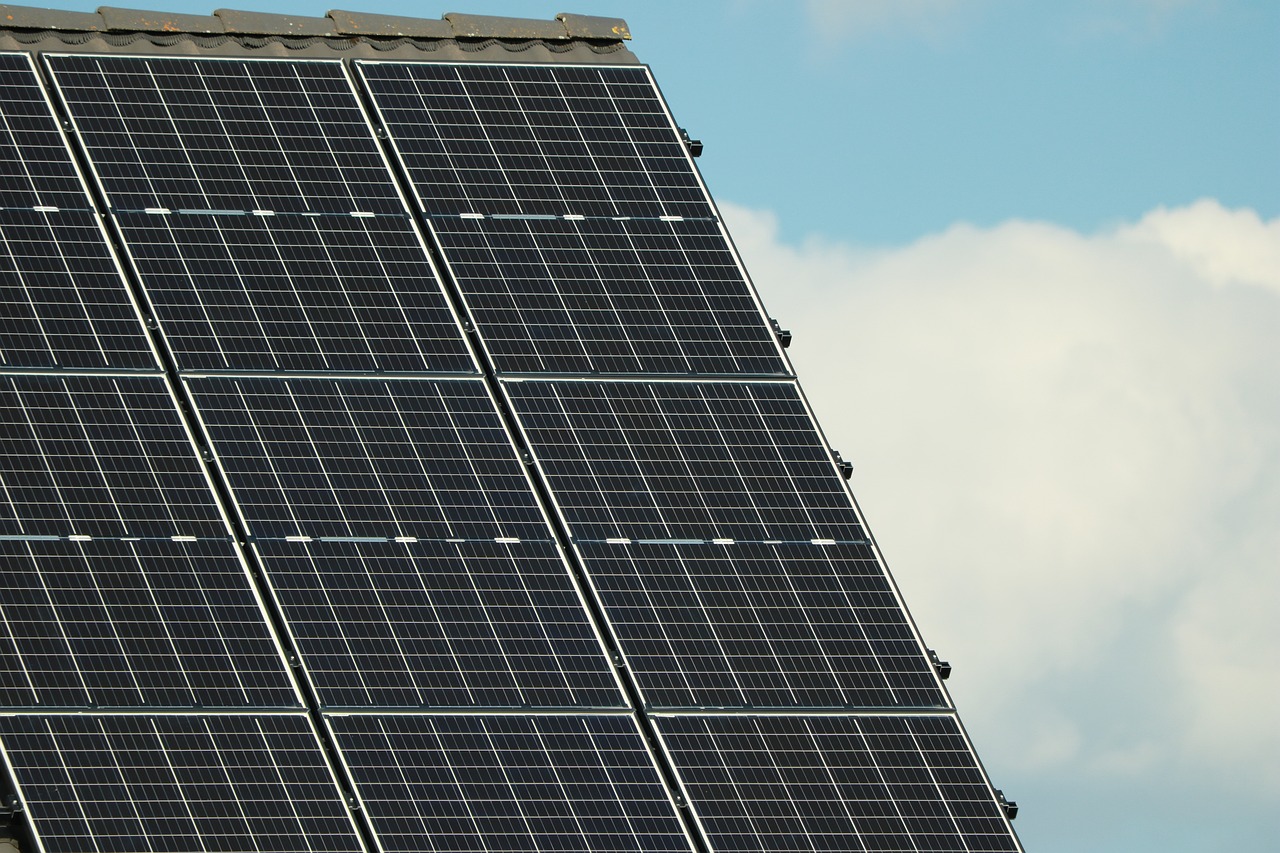
Outdoor Energy Solutions
When it comes to saving electricity, we often think of the indoors, but what about the great outdoors? can significantly reduce your indoor electricity consumption while enhancing your outdoor living space. Imagine enjoying a beautifully lit garden without the guilt of running up your electricity bill. This is where solar-powered solutions come into play. By harnessing the power of the sun, you can illuminate your pathways, gardens, and patios without a single watt drawn from your home’s electrical system.
Solar-powered garden lights are an excellent way to start. These lights charge during the day and automatically turn on at dusk, providing a warm glow that enhances your outdoor ambiance. Not only do they save electricity, but they also add a touch of elegance to your garden. Plus, they come in various styles, from classic lanterns to modern fixtures, allowing you to choose the perfect fit for your aesthetic. The best part? You can install them yourself, making it a fun DIY project!
But solar energy isn’t just limited to lighting. Have you ever considered using a solar oven for your outdoor cooking? These innovative devices use the sun’s rays to cook food, making them an eco-friendly alternative to traditional gas or electric grills. Imagine hosting a barbecue where your steaks are perfectly cooked by the sun, while you enjoy refreshing drinks with friends. Not only does this method save electricity, but it also introduces a unique cooking experience that everyone will love.
For those who enjoy gardening, incorporating solar-powered water features can also be a game-changer. These features not only beautify your space but can also help with irrigation, reducing the need for electric pumps. Some models even come with built-in solar panels, making them completely energy-independent. Imagine the tranquility of a solar-powered fountain bubbling away in your garden, all while knowing it’s not adding to your electricity bill!
In addition to solar solutions, consider using energy-efficient outdoor appliances. For instance, opting for a propane grill instead of an electric one can save a significant amount of energy. Furthermore, using a composting system for your kitchen scraps can reduce waste and provide nutrient-rich soil for your garden, promoting sustainability and reducing your reliance on store-bought fertilizers.
To give you a clearer picture of the potential savings and environmental benefits, here’s a simple comparison of traditional versus solar-powered outdoor solutions:
| Feature | Traditional Solution | Solar Solution |
|---|---|---|
| Lighting | Electric garden lights | Solar-powered garden lights |
| Cooking | Gas or electric grills | Solar ovens |
| Water features | Electric pumps | Solar-powered water features |
As you can see, making the switch to outdoor energy solutions not only reduces your electricity consumption but also enhances your lifestyle. So, why not take a step towards a more sustainable future? Embrace these outdoor energy solutions and watch as both your electricity bill and your environmental footprint shrink!
Q: How do solar garden lights work?
A: Solar garden lights contain solar panels that charge during the day. At night, they automatically turn on using the stored energy.
Q: Can I use a solar oven on cloudy days?
A: Yes, solar ovens can still work on cloudy days, though they may take longer to cook food compared to sunny days.
Q: Are solar-powered water features expensive to maintain?
A: No, solar-powered water features typically require minimal maintenance since they rely on solar energy and have fewer mechanical parts.
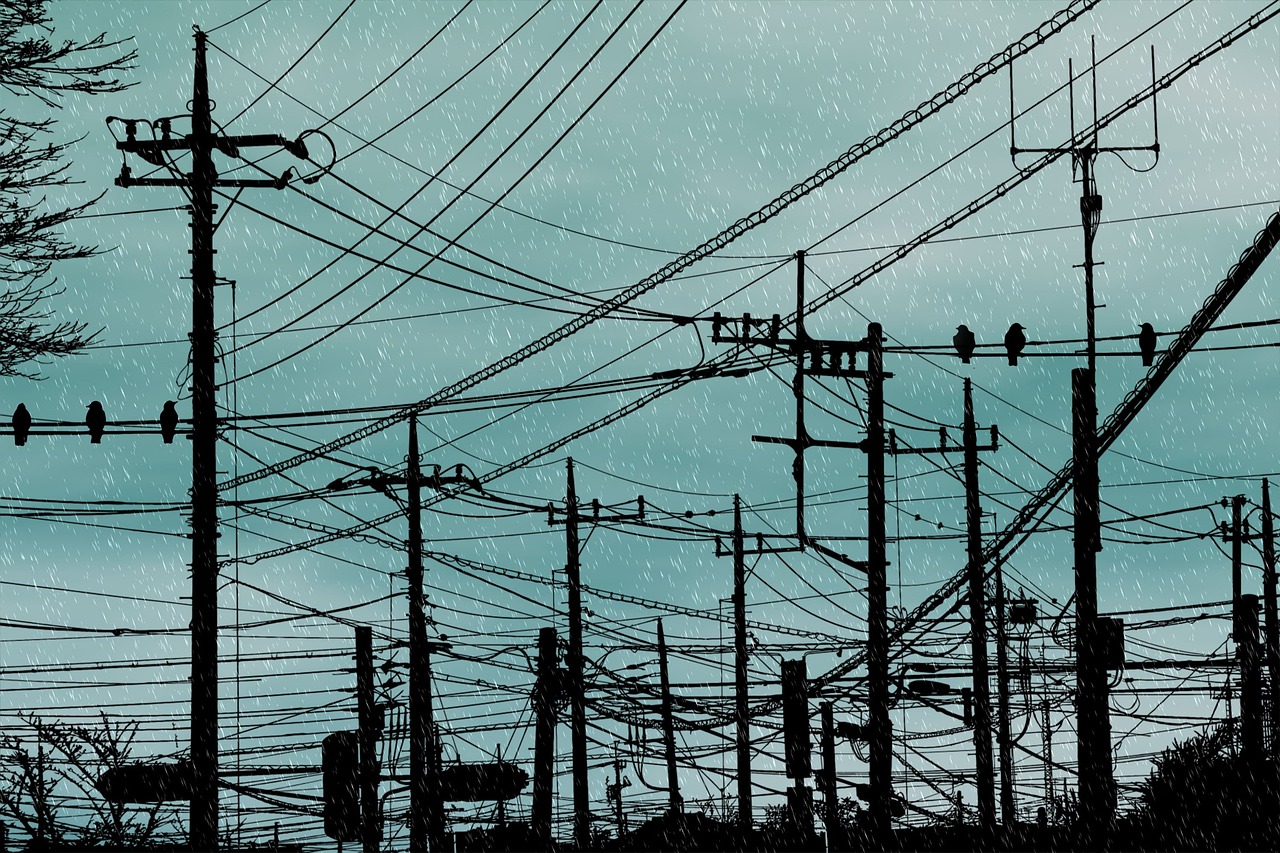
Behavioral Changes
This article explores creative and unconventional methods to reduce electricity consumption in your home, helping you save money while promoting a more sustainable lifestyle.
Maximize the use of natural light by strategically placing mirrors and using lighter colors in your decor, which can significantly reduce the need for artificial lighting during the day.
Investing in smart power strips can help eliminate phantom loads by automatically cutting power to devices that are not in use, leading to substantial energy savings over time.
Upgrading to energy-efficient appliances not only reduces your electricity bill but also contributes to a lower carbon footprint, making your home more environmentally friendly.
Implementing heat reduction techniques, such as using reflective window films or thermal curtains, can keep your home cooler in the summer, decreasing reliance on air conditioning.
Enhancing your home's insulation through DIY projects can prevent heat loss in winter and keep your space cooler in summer, ultimately leading to reduced energy usage.
Integrating smart home technology, like programmable thermostats and smart lighting, allows for more efficient energy management, ensuring that you're only using power when needed.
Exploring alternative cooking methods, such as slow cookers or pressure cookers, can save significant energy compared to traditional ovens, while also providing delicious meal options.
Utilizing outdoor energy solutions, like solar-powered garden lights and outdoor cooking options, can reduce your indoor electricity consumption while enhancing your outdoor living space.
When it comes to saving electricity, sometimes the most effective solutions are the simplest ones. can have a profound impact on your energy consumption without requiring costly upgrades or complex installations. For example, have you ever considered how often you leave lights on in empty rooms? Making a habit of turning off lights when you leave can significantly reduce your energy usage. It’s like turning off the faucet while brushing your teeth; every little bit helps!
Another small yet impactful change is unplugging chargers and devices that you’re not using. Many people don’t realize that electronics can draw power even when they’re turned off, a phenomenon known as phantom load. By simply unplugging these devices, you can save a surprising amount of energy over time.
Additionally, consider your usage patterns. Are you using your washing machine for small loads? Try to wait until you have a full load before running it. This not only saves electricity but also water! You can even create a weekly schedule to help you remember when to do laundry, ensuring that you’re maximizing your resources.
Here are a few more behavioral changes that can lead to noticeable savings:
- Switch off appliances after use, especially high-energy devices like computers and televisions.
- Use energy-efficient settings on your appliances whenever possible.
- Be mindful of heating and cooling; adjust your thermostat a few degrees higher in summer and lower in winter.
By adopting these simple habits, you can contribute to a more sustainable lifestyle while keeping your electricity bills in check. It’s amazing how a few conscious decisions can lead to significant savings, isn’t it?
Q: What are phantom loads?
A: Phantom loads are the energy consumed by electronics when they are plugged in but not in use. This can include devices like chargers, TVs, and computers.
Q: How can I remember to turn off lights?
A: Consider using reminders or timers. You can also make it a habit to check each room before leaving.
Q: Do energy-efficient appliances really save money?
A: Yes, energy-efficient appliances use less electricity, which can lead to lower utility bills over time.
Q: What is the best way to reduce heating costs in winter?
A: Improving insulation, using thermal curtains, and adjusting your thermostat can all help to reduce heating costs.
Frequently Asked Questions
- What are some creative ways to save electricity at home?
There are plenty of unusual methods to cut down on your electricity usage! For instance, try maximizing natural light by placing mirrors strategically around your home. This simple trick can brighten up your space and reduce the need for artificial lighting during the day. You can also consider using lighter colors in your decor to reflect more light.
- How do smart power strips work?
Smart power strips are a game-changer! They automatically cut power to devices that are not in use, helping to eliminate those pesky phantom loads that can inflate your electricity bill. This means you can keep your devices plugged in without worrying about wasting energy when they’re not actively being used.
- Are energy-efficient appliances worth the investment?
Absolutely! Upgrading to energy-efficient appliances can significantly lower your electricity bills. Not only do they consume less power, but they also help reduce your carbon footprint, making your home more eco-friendly. Plus, many of these appliances come with rebates or incentives, so you might save money upfront as well!
- What are some effective heat reduction techniques?
Keeping your home cool in the summer without cranking up the air conditioning is possible! Techniques like using reflective window films or thermal curtains can block out heat, making your living space much more comfortable. These solutions can help you save on cooling costs while still enjoying a pleasant environment.
- How can I improve my home insulation on a budget?
DIY insulation improvements are a fantastic way to enhance your home’s energy efficiency without breaking the bank! Simple projects like sealing gaps around windows and doors or adding insulation to your attic can make a huge difference. This not only keeps your home warmer in winter but also cooler in summer, leading to reduced energy usage.
- What benefits do smart home technologies offer?
Integrating smart home technology can revolutionize how you manage energy in your home. Devices like programmable thermostats and smart lighting allow you to control your energy usage more efficiently. You can set schedules or control them remotely, ensuring that you only use power when it’s really needed, which can lead to significant savings.
- Are there alternative cooking methods that save electricity?
Definitely! Exploring alternative cooking methods, such as using slow cookers or pressure cookers, can save a ton of energy compared to traditional ovens. These appliances are designed to cook food efficiently, often in less time and with less electricity, all while delivering delicious meals!
- How can outdoor energy solutions help reduce indoor electricity consumption?
Outdoor energy solutions, like solar-powered garden lights and outdoor cooking options, can significantly cut down on your indoor electricity usage. By utilizing renewable energy sources and outdoor cooking methods, you not only enhance your outdoor living space but also lessen the load on your home’s electrical system.
- What simple behavioral changes can lead to energy savings?
Sometimes, the smallest changes can make the biggest impact! Simple habits like turning off lights when you leave a room or unplugging chargers when they’re not in use can collectively lead to noticeable savings on your electricity bill. It’s all about being mindful of your energy consumption!



















